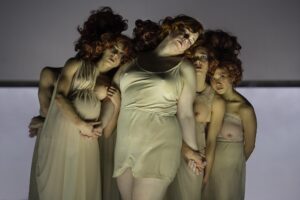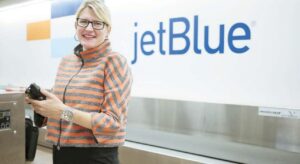
Aiming for the stars was exactly what Russian and U.S. women astronauts Valentina Vladimirovna Nikolayeva Tereshkova and Sally Ride, Ph.D., respectively, did paving the way for other women astronauts and little girls around the world to dream big.
Sally passed away on July 23 due to pancreatic cancer at the age of 61 after a 17 month battle with the disease.
Valentina, 75, retired to a small brick dacha outside of Star City in 1999. Her humble home is demarked by a seagull weathervane that commemorates the call sign of her flight in space.
Exactly twenty years after Valentina’s first flight in June 1963 in the Vostok 6, Sally took to the stars in the space shuttle Challenger in 1983.
Since these two pioneering women flew into outer space, 55 other women have made the journey. As a part of Russia’s propaganda ploy and a bragging right during the Cold War with the U.S., government officials launched five Russian women into space, including Svetlana Yevgenyevna Savitskaya, the first woman to walk in space in 1982.
She was followed two years later by Kathryn D. Sullivan, who became the first U.S. woman to walk in space in 1984.
The U.S. has sent the most women in space, more than 30, and the most diverse team of female astronauts: African-American space explorers Mae Carol Jemison (1992), who was the first, and Joan Elizabeth Higginbotham (2006) and Stephanie Diana Wilson (2006); Ellen Ochoa (1993, ’94, ’99, and 2002), the first Latina; Kalpana Chawla (2003), the first Indian-American; Anousheh Ansari (2006), Iranian-American; Judith Arlene Resnik (1984 and 1986), the first Jewish-American woman.
It wasn’t widely known until Sally’s passing away that she was also, a lesbian, making her the first gay, lesbian, bisexual, and transgender astronaut and space explorer.
In 2010, the National Aeronautics and Space Administration marked the most women in space during an international expedition to the International Space Station with three U.S. and one Japanese female astronaut marking the most female spaceflyers in orbit at the same time, according to a NASA news release March 17, 2011.
Chasing dreams into the stars is exhilarating and dangerous at times. Not all women astronauts returned to the earth safely. In 1986, the explosion of the Challenger space shuttle moments after liftoff took the lives of seven of its crew members including astronaut Judith and school teacher Christa McAuliffe. A little more than 17 years later, the space shuttle Columbia took the lives of seven more astronauts, including Kalpana and Laurel Blair Salton Clark in 2003.
Women around the world continue to explore space. The 1990s saw a burst of women blasting off with the United Kingdom being the first nation after Russia and the U.S. to send a woman to space. Brition Helen Patricia Sharman, OBE, Ph.D., flew to the stars in 1991. She was followed by Canada’s Roberta Bondar a year later. Japan got in on the launch pad action with Chiaki Mukai, making her the first Asian woman to travel to space aboard the Columbia shuttle in 1994.

In June, Liu Yang, became China’s first female astronaut to fly into outer space as one of the three-member exploratory team that blasted off in the Shenzhou 9 spacecraft, powered by a Long March 2F rocket. The team’s mission was to conduct experiments and live for up to 20 days at the Tiangong 1 space lab module, a small space station the Chinese launched in 2011. The goal of the mission is to begin plans for building a space station by 2020.
Prior to Yang’s journey to space, Yi So-yeon, South Korea’s first female astronaut took her inaugural trip to the International Space Station commanded by U.S. veteran astronaut Peggy Annette Whitson, 52, in 2008. Peggy is the first commander of the ISS. She was followed by Naoko Yamazaki, Japanese astronaut in 2010.

Flying to the stars
What makes a woman want to fly into the stars?
In Sally’s case she simply responded to a newspaper job posting for an astronaut position at NASA in 1978 while she was still studying at Stanford University, reported the New York Times, in her obituary. Five years later at the age of 32, she was launched into space aboard the shuttle Challenger on June 18, 1983. She made a second mission to space a year later.
Sally held degrees in physics and astrophysics, as well as English. She was completing her studies in laser physics when she joined NASA. Later she added engineering to her resume after undergoing extensive training in learning how to fly a jet, parachuting, water survival, weightlessness, and the “huge G-forces of a rocket launch,” reported the NYT.
For her initial six day flight on the shuttle Challenger she developed a robotic arm which she used to deploy and retrieve a satellite.
She also sat on the investigative panels of the Challenger explosion in 1986 and the Columbia crash in 2003.
Her innovation marked the start of a long career creating scientific products and science education in U.S. schools heading up the Sally Ride Science, where she was chief executive officer for 11 years until complications from pancreatic cancer took her life.
Her partner of 27 years Tam O’Shaughnessy is chief operating officer of the SRS and who co-authored several children’s books, including The Mystery of Mars, Explaining Our Solar System, and Mission: Save the Planet: Things YOU Can Do to Help Fight Global Warming!
.
Sally was married to fellow astronaut Steven Hawley in 1982. The couple divorced in 1987.
Sheryle Bolton took the seat that Sally once sat in leading the organization SRS and its 40 employees, according to a news release from the organization on August 16. The SRS is a leader in developing scientific products and facilitating education in science, technology, engineering, and math along with creating innovative programs and partnerships that have reached more than one million students and teachers in the 4th – 8th grades nationwide.
Sally was keenly aware of the influence of societal denigration of girls in math and science, which spurred her to reach out to girls through SRS. As young girl, Sally was naturally drawn to math and science and sports. She played tennis competitively as a girl with her parent’s guidance and into her years at Stanford University becoming the university’s No. 1 women’s singles player and was nationally ranked.
Her father was a political science professor at Santa Monica College and her mother was a volunteer counselor at women’s correctional facility in Los Angeles, Calif., U.S.A. Sally’s parents encourage and her younger sister Bear, an openly gay activists and Presbyterian minister, and her to study hard and be the best that they could be at whatever their endeavors, Bear wrote in a letter about her sister’s death to NBC News.
Sally was strong-willed and smart. So smart that her teachers at the Westlake School for Girls, a prep school in Los Angeles, hold her interest and she wasn’t shy about letting them know it. Achieving good grades wasn’t a challenge for her, but she found a mentor who also became her friend, Elizabeth Mommaerts, a science teacher.

Valentina’s journey to space was quite different from Sally’s.
The middle child of Vladimir Aksyenovich Tereshkov, who was a tractor driver, and her mother Elena Fedorovna, a textile plant worker, she was born and raised in a small town in the Yaroslavl Region of the then Soviet Union with her older sister and younger brother.
Valentina’s father was declaired missing in action during the Finno-Russian War (1939 – 1940), leaving her mother to raise the children herself.
A late bloomer, Valentina didn’t being attending school until she was eight years old, after the war ended. Her education was interrupted again when she was 17-years old when she had to go to work support her family.
Both Sally and Valentina shared one factor in common: they were ambitious and aspired to be more than what life and society laid out for them.
Valentina completed her education through correspondence courses. She then went on to learn sky diving through an auxiliary organization of the Soviet Air Force, DOSAAF Aviation Club and turned around to teach sky diving to others by founding and heading the Textile Mill Workers Parachute Club. She earned her certification as a cotton-spinning technology expert after becoming the secretary of the local Young Communist League (Komsolmol) two years later.
Valentina was hand selected one out of five finalist out of 40 female parachutists considered to enter the Soviet Union’s space program in the race to beat America sending a woman to space.
In 1962, she was the last pick out of the far more educated and experienced cosmonaut women in her group, but after extensive training and interviews Valentina came out on top with all the right stuff from completing the training to being a strong supporter of the Communist Party and marrying fellow Communist astronaut Andrian Nikolayev the same year she went to space. In 1963, she became the first woman in space orbiting the earth for three days and mechanical complications that she used her smarts to circumvent aboard Vostok 6.
Valentina endured a great deal of sexism from attempts to discredit her and fellow female cosmonauts and never being fully accepted into the Soviet Space Program. Her marriage to Andrian also crumbled several years after her orbit and birth of their child Elena Andrianovna. She finally left Andrian in 1979. The Communist Party granted her request for a divorce in 1982.
She persevered obtaining a graduate level engineering education at the Zhukovskiy Military Air Academy. When the female cosmonaut detachment program was disbanded she became a prominent Communist politician and international representative of the Soviet Union.
Valentina found love with Yuliy Shaposhnikov, a physician for the military medical academy. It was her second long term romantic relationship that lasted 20 years. After his death, Valentina retired to a place outside of Star City in Russia.
NASA commemorated women’s contributions to space travel for Women’s History Month in 2011 with the launch of Women@NASA.

Touring space
Private space travel isn’t a distant dream or science fiction. In September 2006, Anousheh Ansari, a Persian born Iranian-American became a space ambassador. She blasted off with an international team of Expedition 14 space explorers aboard the Soyuz TMA-9 for an eight day expedition at the International Space Station. The fourth space tourist, she accomplished her lifelong dream right around her 40th birthday and blogged about the experience that garnered 50,000 hits from around the world.
The co-founder and chairperson of Prodea Systems, a technology company founded by her family, Anousheh wrote about her life experience in the memoir, My Dream of Stars: From Daughter of Iran to Space Pioneer, with the assistance of Homer Hickman.
Australian Glenys Ambe, owner of the Gold Coast’s Caterpillar boutique, might be the next female space tourist. She’s reportedly plunked down $200,000 for her ticket on Virgin Galactic as an “early 60th-birthday present to herself, she tells the NYT.
Sure, space travel is still limited to the ultra rich. The average woman and man are not likely to fly into orbit within the next year, but more likely across the age old Atlantic or Pacific oceans, but that doesn’t mean that space flight isn’t a possibility in the foreseeable near future for everyone.
Suborbital tourist flights could begin in 2014 for a mere $95,000 to $200,000 per seat, according to “Suborbital Reusable Vehicles: A Ten-Year Forecast of Market Demand”, a $277,000 study commissioned by the U.S. Federal Aviation Administration that was released in early August.
The FAA oversees commercial spaceflight and NASA’s Kennedy Space Center, reported Reuters.
The study estimates that commercial suborbital spaceflights 60 miles into the sky could bring in between $600 million to $1.6 billion in the first decade of operation alone. It is much needed revenue for NASA to stay afloat, reported the NYT.

Commercial suborbital spaceflights should bring in between $600 million and $1.6 billion in revenue in their first decade of operations.
Those tourism dollars are wanted by NASA just as much as the bragging rights of the tourists willing to spend five minutes in space viewing the earth against the cosmic backdrop. Eventually, tourists will be able to get a nearly two week orbital vacation offered by Space Adventures and lodging in a private space station designed by Budget Suites America, reports the NYT.
Space tourism is on the way with six companies, such as multibillionaire playboy Richard Branson who formed Virgin Galactic, developing suborbital spaceships.
Virgin Galactic already has an estimated $70 million in deposits from 536 people seeking a space ride on Virgin Galactic’s six-passenger SpaceShipTwo, George Whitesides, chief executive of the company, told the U.S. Congress at a hearing in conjunction with the release of the report in August.
Even Seattle-based Amazon’s founder and chief executive Jeff Bezos is in on the space adventure with his own company, Blue Origin, which appears to be planning “budget” orbital spaceflights.
With such big heavy hitters aiming for the stars, Space Tourism appears to be about ready to take off and women are getting aboard.
Sources:
American Woman Who Shattered Space Ceiling
Anousheh Ansari
Anousheh Ansari: “First Female Private Space Explorer & First Space Ambassador”
Astronaut Q&A: A Violent Return, Odd Welcome to Earth
Astronaut Sally Ride dies
Encyclopedia Astronautica Tereshkova
Encyclopedia Astronautica Savitskaya
Female Space Travelers: A Complete List
First Female Astronaut From China Blasts Into Space
Joan E. Higginbotham
Kalpana Chawla (Ph.D.)
Mae C. Jemison (M.D.)
NASA Launches Website to Honor Women in Space
Peggy A. Whitson (Ph.D.)
Remembering the Challenger: 25 Years Ago, Space Shuttle Exploded After Liftoff
Sally Ride Science
Sally Ride video
Space Tourism Is Here! Wealthy Adventurers Wanted
Stephanie D. Wilson
Tragedy of Space Shuttle Columbia
US study projects growing demand for commercial spaceflights
Why Sally Ride waited until her death to tell the world she was gay
***********************************
Girls That Roam is looking for other trailblazers, women who answered the call to adventure traveling the world and paved the path for other women before the modern age. We have our list of women, but we know there are more women out there who have blazed new paths exploring the world and beyond that we live in, especially women from Africa, Asia, the Middle East, South America, and Native America (we know Pocahontas and Sacajawea weren’t the only Native American women travelers), and beyond that we haven’t been introduced to. Know of a woman traveler before our time? Want to write about a woman traveler who wore down the trail for other women to travel? Send an email to ">editor [@] girlsthatroam [.] com.
To purchase reprints, contact ">editor [@] girlsthatroam [.] com.







